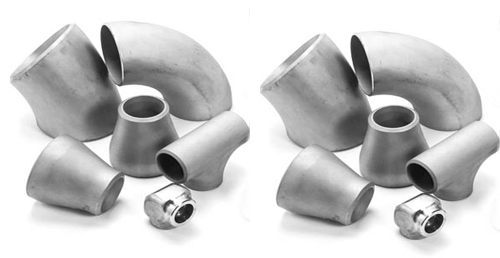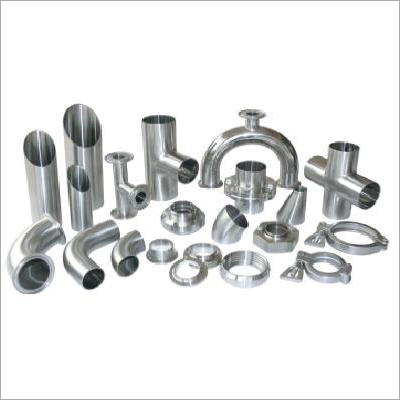Stainless Steel Pipe Fitting
What is a stainless steel pipe fitting?
Stainless steel tube fittings are all the connecting fittings that butt weld to tube. These fittings are measured on the outside diameter of the tube and are available in grades 304 or 316 stainless. The main forms are: Tube bends in 45 degree, 90 degree, 180 degree and 1x Diameter short radius 90 degree.
SS pipe fittings are fittings made of stainless steel that are used to connect pipes and tubes in a piping system. They come in various types, shapes, and sizes to suit different applications and are often used in industries such as chemical, petrochemical, pharmaceutical, and food processing.
Some common types of SS pipe fittings include:
- SS Elbow: A fitting that allows for a change in the direction of the pipe.
- SS Tee: A fitting that allows for a connection of three pipes in a T-shaped configuration.
- SS Reducer: A fitting that allows for a connection of pipes with different diameters.
- SS Coupling: A fitting that connects two pipes of the same diameter.
- SS Union: A fitting that allows for easy disassembly and reassembly of pipes.
SS pipe fittings are preferred in many applications because of their corrosion resistance, durability, and ability to handle high temperatures and pressures.
How to use SS pipe fittings, you will need to follow a few steps:
- Prepare the pipes: Before connecting the pipes with SS fittings, make sure that the ends of the pipes are cut square and free of any burrs or debris.
- Apply sealant: Apply sealant on the threads of the male end of the fitting. This will help to prevent leaks.
- Connect the fitting: Screw the fitting onto the pipe and tighten it with a wrench. Make sure not to over-tighten the fitting as this can cause damage to the threads.
- Repeat: Repeat the process for the other end of the fitting and the other pipe.
- Test for leaks: Once the fittings are connected, test the system for leaks by running water or air through it.
It’s important to note that different types of SS fittings may have slightly different installation procedures, so it’s important to refer to the manufacturer’s instructions for specific guidance.
It’s also important to use the appropriate SS fittings for the application. For example, if the system will be handling high pressures or temperatures, it’s important to use fittings designed for these conditions.
There are several benefits of using SS pipe fittings:
- Corrosion resistance: Stainless steel is highly resistant to corrosion, making SS pipe fittings ideal for use in environments where the system may be exposed to corrosive elements.
- Durability: SS pipe fittings are highly durable and can withstand high pressures and temperatures. They also have a long lifespan and require minimal maintenance.
- Aesthetic appeal: Stainless steel has an attractive appearance, which makes SS pipe fittings suitable for use in applications where aesthetics are important, such as in the food industry.
- Hygienic: Stainless steel is non-porous and easy to clean, making it an ideal material for use in applications where hygiene is important.
SS pipe fittings find applications in a wide range of industries, some of which include:
- Chemical and petrochemical industries: SS pipe fittings are commonly used in chemical and petrochemical industries due to their corrosion resistance and ability to handle high temperatures and pressures.
- Food and beverage industries: SS pipe fittings are widely used in the food and beverage industry because they are hygienic, easy to clean, and do not react with food.
- Pharmaceutical industry: SS pipe fittings are used in the pharmaceutical industry because of their hygienic properties and resistance to corrosion.
- Water treatment industry: SS pipe fittings are used in water treatment plants because of their resistance to corrosion and ability to handle high pressures.
SS pipe fittings are versatile and offer several benefits that make them suitable for use in a variety of applications.


